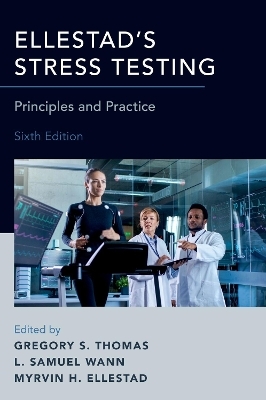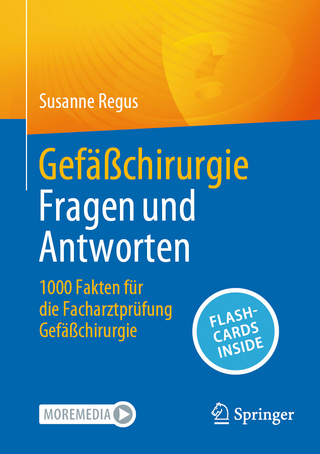
Ellestad's Stress Testing
Oxford University Press Inc (Verlag)
978-0-19-022548-3 (ISBN)
Chapters on the physiology of exercise testing including practical details regarding protocols for conducting the stress test, proper supervision, important parameters to be monitored, and the diagnostic and prognostic information to be gleaned from the electrocardiogram set the stage for expanded chapters on the use of cardiac imaging in conjunction with stress testing. Physiologic and metabolic considerations during stress testing are covered in detail. Application of stress testing to special populations, such as women, children, athletes, and individuals in both high and low risk groups are covered in new chapters. Finally, the authors address the use of stress testing in limited resource environments and discuss global changes in the incidence of atherosclerosis, and suggest how stress testing may evolve.
Gregory Thomas, MD, Medical Director, MemorialCare Heart & Vascular Institute, Long Beach Memorial Medical Center; Clinical Professor and Director of Nuclear Cardiology Education, University of California, Irvine, Long Beach, California L. Samuel Wann, MD, Attending Cardiologist, Columbia-St. Mary's Healthcare, Milwaukee, Wisconsin
Preface
List of Contributors
Introduction
1. History of Exercise Testing
2. Physiology of Cardiac Ischemia
Practical Considerations in Stress Testing
3. When to Use Exercise Testing - Indications, Guidelines and Appropriate Use Criteria
4. Contraindications, Risks, and Safety Precautions for Stress Testing
5. Parameters to be Measured During Exercise
6. Blood Pressure Measurement During Exercise
7. Stress Testing Protocols
8. The Ellestad Protocol
9. Interpretation of the ECG During Stress Testing
10. Rhythm and Conduction Disturbances in Stress Testing
11. Predicting Prognosis with the Exercise Test: Putting It All Together
12. Non-physician Supervision of Stress Testing
13. Optimizing Stress Testing in a Limited Financial Resource Environment
Role of Cardiac Imaging in Stress Testing
14. Making Clinical Decisions Based on Exercise Testing
15. Nuclear Cardiology
16. Stress Echocardiography
17. Stress Cardiac Magnetic Resonance Imaging
18. Stress X-Ray Computed Tomography
19. Combining Calcium Scanning and Treadmill Exercise: The "Treadmill Calcium Test"
Physiologic and Metabolic Considerations
20. Cardiovascular and Pulmonary Responses to Exercise
21. Cardiopulmonary Exercise Testing
22. Heart Rate Response to Exercise
23. Metabolic Abnormalities and Drugs
Stress Testing in Specific Populations
24. Stress Testing in Women
25. Stress Testing of Athletes and Those in High Risk Occupations
26. Sports Medicine and Cardiac Rehabilitation for Coronary and Peripheral Artery Disease
27. Stress Testing in Children
The Future of Stress Testing
28. The Impact of Changing Global Atherosclerosis Patterns on Stress Testing
29. Perspectives on the Future of Stress Testing
Appendix
| Erscheinungsdatum | 27.11.2018 |
|---|---|
| Verlagsort | New York |
| Sprache | englisch |
| Maße | 259 x 178 mm |
| Gewicht | 1633 g |
| Themenwelt | Medizinische Fachgebiete ► Chirurgie ► Herz- / Thorax- / Gefäßchirurgie |
| Medizinische Fachgebiete ► Innere Medizin ► Kardiologie / Angiologie | |
| Studium ► 1. Studienabschnitt (Vorklinik) ► Physiologie | |
| Studium ► 2. Studienabschnitt (Klinik) ► Anamnese / Körperliche Untersuchung | |
| ISBN-10 | 0-19-022548-3 / 0190225483 |
| ISBN-13 | 978-0-19-022548-3 / 9780190225483 |
| Zustand | Neuware |
| Haben Sie eine Frage zum Produkt? |
aus dem Bereich


